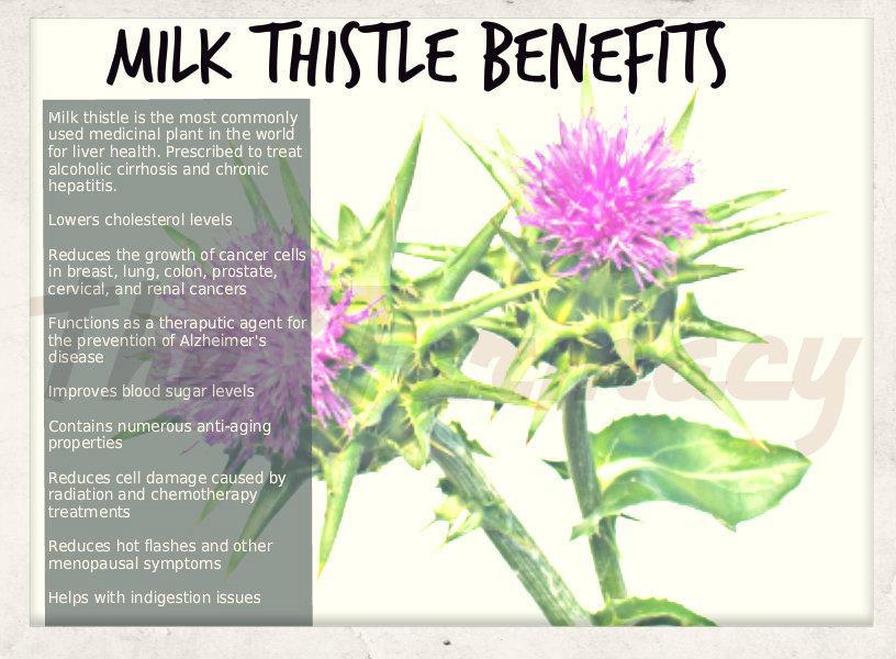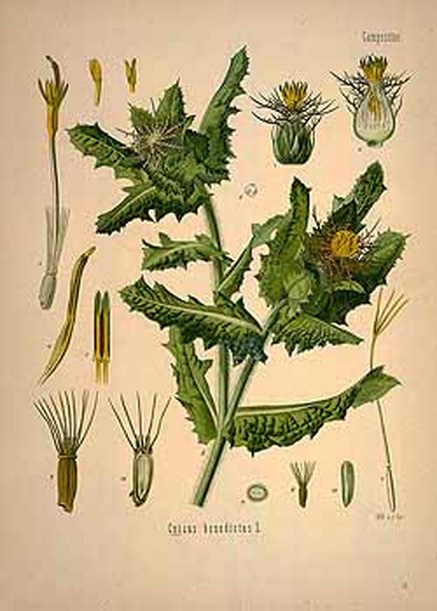
Through the ages, the thistle has earned a reputation as a cursed plant. Bristly and prickly, it spreads rapidly and can take over vast fields where less invasive plants once stood. Ancient people often considered the thistle an abomination, a sign of a rich land gone wrong.
Modern research shows that the fruit of the milk thistle (Silybum marianum) may restore and protect the liver, the body’s largest internal organ, from damage by chemicals, alcohol, and other toxins.
Clues From The Past
Historical references to the thistle’s medicinal value, including liver protection, are particularly abundant in the herbals of the Middle Ages. But milk thistle has been praised throughout the centuries for its ability to cure; such observations have contributed to modern interest in the herb.
Dioscorides, the first-century Greek physician who wrote a treatise on more than 600 medicinal plants titled De Materia Medica, stated that a tea of thistle seeds could be used for treating snakebite. John Gerard, a sixteenth-century English herbalist, went further. “My opinion,” he wrote, “is that this is the best remedy that grows, against all melancholy diseases.” Melancholy once referred to any liver or bile disease; it comes from the Greek roots melan, for black, and chole¯, for bile.
Nicholas Culpeper, a seventeenth-century apothecary, thought milk thistle was good for removing obstructions of the liver and spleen, and recommended an infusion of the fresh root and seeds to treat jaundice. The Eclectics, a school of medical herbalists of the late nineteenth and early twentieth centuries, used milk thistle to treat varicose veins and various pelvic congestions, including those linked to menstruation and to the liver, spleen, and kidneys.
Modern Views
Using milk thistle as medicine became less common in the West during the twentieth century, perhaps with the discovery of penicillin and the development of modern medical approaches. But during the 1970s in Germany, where herbs have remained an integral part of medical care, scientists began testing the herb’s fruits (commonly referred to as seeds) and discovered some compounds collectively called silymarin.
During the 1980s, researchers learned that silymarin increases the ability of liver cells to regenerate through a vital bodily process known as protein synthesis. Additionally, laboratory and human research showed that silymarin counteracts the effects of poisons, even that from the deathcap mushroom (Amanita phalloides), the most virulent liver toxin known.
Using Milk Thistle
The German government endorses the use of milk thistle as a supportive treatment for inflammatory liver conditions such as cirrhosis, hepatitis, and fatty infiltration caused by alcohol or other toxins. It also recognizes that silymarin possesses the ability to help prevent liver damage if taken before toxin exposure.
Who may benefit from using it: Anyone with a liver-based problem including cirrhosis, jaundice, hepatitis, damage from alcohol or drug abuse, or liver poisoning from other foreign chemicals.
Milk thistle is also effective for less serious problems. After several months of using milk thistle extract, one can seriously improve digestion and liver function. Up to 1 dropperful of the tincture or 1 tablet of the powdered concentrate three times daily—when having digestive discomfort from overeating or eating unsettling food combinations. Take milk thistle in conjunction with a regimen of light eating (fruits and vegetables) for five days to a week.
Daily dose: For preventive care, take 420 mg of silymarin divided into three doses for six to eight weeks, after which the dose can be reduced to 280 mg per day for an indefinite period. Look for preparations that are standardized to 80 percent silymarin. Standardized milk thistle products can be found in natural and health-food stores.
Cautions: No known toxic side effects if taken according to instructions. Tinctures are fine for prevention and liver support when no previous disease exists.
